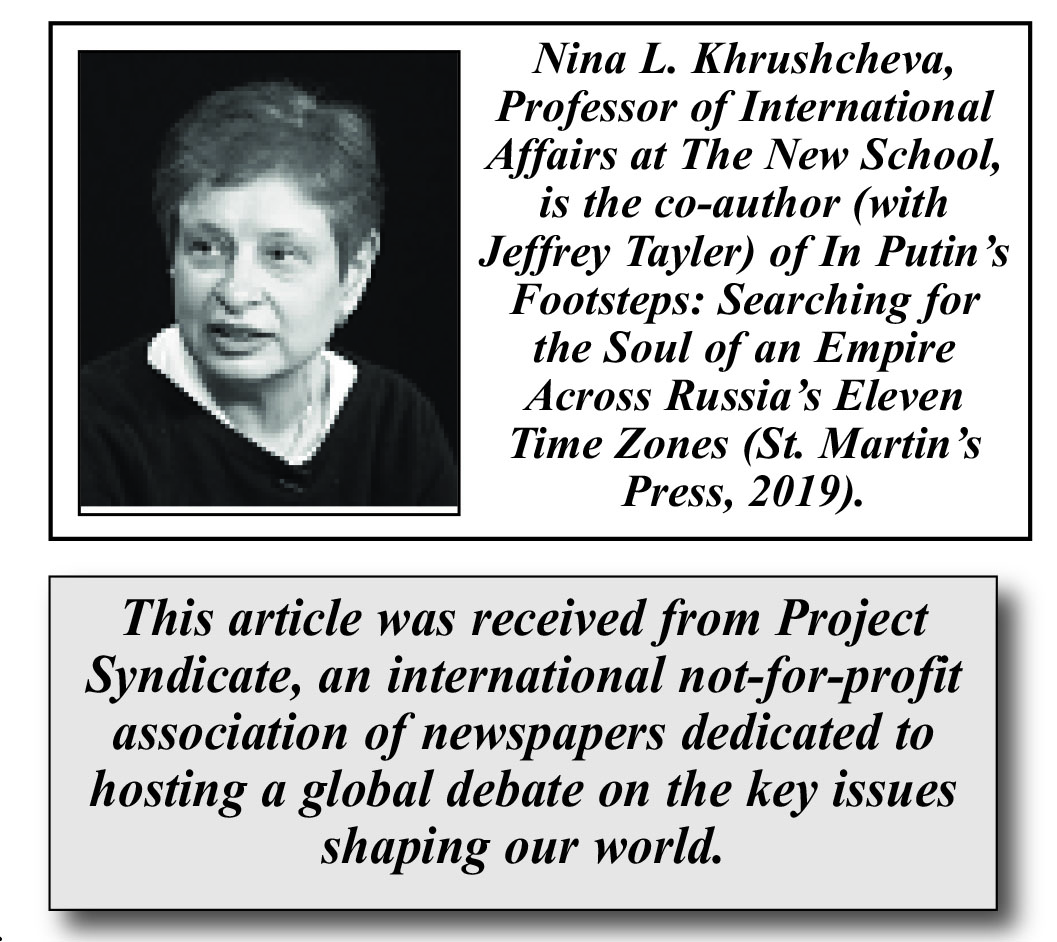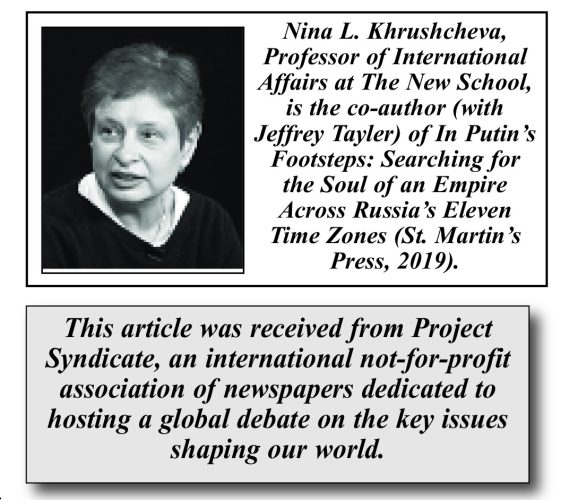MOSCOW – Unlike during his first term in the White House, US President-elect Donald Trump appears determined to keep many of his campaign promises. His cabinet nominations – from the Kremlin-friendly Tulsi Gabbard as Director of National Intelligence to the conspiracy-loving vaccine skeptic Robert F. Kennedy, Jr., as Secretary of Health and Human Services – confirm Trump’s commitment to a scorched-earth campaign against American institutions and perceived “enemies within.” And his victory speech suggests that he is serious about “stopping wars” – beginning with the one in Ukraine.
Trump has long asserted that he would end the Ukraine war within 24 hours of taking office. There has been much speculation about the settlement Trump has in mind, and the scenarios all have one thing in common: Ukraine’s dismemberment. If this has to be the cost of peace, it is worth considering the grim history of territorial partition.
Few events create such long-lasting enmity; fewer still have caused more devastating violence. The three partitions of Poland that took place in the late eighteenth century are perhaps Europe’s closest parallel to Trump’s vision for Ukraine. Beginning in 1772, Austria’s Habsburg monarchy, the Kingdom of Prussia, and the Russian Empire seized and annexed territory, effectively dividing Polish lands among themselves and erasing what had been Europe’s largest state by landmass.
In the face of such subjugation, violent resistance is all but inevitable. Poles conducted periodic guerrilla-style campaigns throughout the occupation, with major uprisings in 1831 and 1863. Resistance continued well into the twentieth century, led by Josef Piłsudski’s campaigns for independence – laced with acts of terror – before World War I. Enmity toward Russia, in particular, endures to this day, with the Kremlin having Stalin-era violence toward the Polish people to answer for.
As for France, it harbored hatred toward Germany for decades over Kaiser Wilhelm I’s absorption of Alsace and Lorraine into the new German Empire following the Franco-Prussian War of 1879-71. Reconciliation between the two countries began only in the 1950s, with the emergence of the European Coal and Steel Community (the precursor to today’s European Union) and NATO.
Similarly, Britain’s decision to partition Ireland, keeping the northern province of Ulster as part of the United Kingdom, incited a civil war between those willing to cede Northern Ireland, led by Michael Collins, and those who rejected any treaty that did not grant Ireland complete independence. That savage war of peace lasted just two years, but left a legacy of terror – both Catholic and Protestant – that ended only with the Good Friday Agreement, brokered by the United States, in 1998.
Perhaps the most brutal partitions, however, occurred in Asia in the twentieth century. In 1932, the Empire of Japan carved Manchuria out of the Republic of China and created the puppet state of Manchukuo. The Japanese Kwantung Army’s ruthless 13-year rule there – which included the enslavement of millions of people, perverse medical experimentation, and wholesale slaughter of minorities – became something of a blueprint for the Nazis in Eastern Europe. So deeply held is Chinese resentment over Imperial Japan’s savage occupation that, to this day, China’s leaders invoke it to stoke opposition to the policies of modern democratic Japan.
In terms of lives lost directly to a partition, however, nothing can compare to the 1947 division of the Indian subcontinent, following the departure of the British, into Hindu-majority India and Muslim-majority Pakistan. The partition triggered one of the largest migrations in history – involving some 18 million people – with Muslims heading to Pakistan (including modern-day Bangladesh), and Hindus and Sikhs trekking to India. Sectarian violence – including rapes, burnings, and mass killings – led to the deaths of as many as 3.4 million people.
In the 77 years since the British Raj was partitioned, India and Pakistan have fought four wars, with the most recent – the so-called Kargil War of 1999 – occurring when both countries already possessed nuclear weapons. No historic rapprochement, à la France and Germany, is in the offing.
Vietnam’s 1954 partition – into a northern zone, governed by the communist Viet Minh, and a southern zone, governed by the Republic of Vietnam – proved similarly bloody, as it unleashed two decades of war that left up to three million Vietnamese dead. (Remarkably, the Vietnamese do not seem to harbor a grudge against the United States, which lost 58,000 troops before withdrawing in 1975, for its role in their national agony.)
And then there is the 1947-48 partition of Palestine into an independent Jewish state and an independent Arab state. This decision by the United Nations sparked decades of hostility, oppression, terrorism, and wars that continue to this day. One need only to look at the ruins of Gaza to see the horrifying legacy of partition here.
So, what might a partition of Ukraine yield? In fighting for their territorial integrity since February 2022, Ukrainians have demonstrated courage and dynamism – qualities they will certainly bring to bear in rebuilding their country. But given the scale of the human and economic losses they have incurred, it will be hard for them to submit quietly to the idea of partition. It will be especially hard given that Russian President Vladimir Putin has made no secret of his belief that Ukraine is not just a “neighboring country,” but “that modern Ukraine was entirely created by Russia,” and, therefore, should exist only under the Russian umbrella.
In any possible future peace negotiations, Ukrainians know that the best chance to prevent further Russian interference is through ironclad international security guarantees – if not immediate NATO membership. Trump appears to loathe America’s current security commitments, but for the US not to offer such guarantees may prove harmful to Russia, too.
Putin rose to power on the heels of a devastating war and a protracted insurgency in Russia’s republic of Chechnya, which included terrorist attacks by Chechen separatists in Moscow and other Russian cities. Already in 2022, the Ukrainians promised a guerrilla war against Russia. Devoid of other options, that risk will only increase. Trump should seek to persuade the Kremlin of the need for fair negotiations; otherwise, post-partition terrorism may come to Russia, possibly on a greater scale than the Chechens ever imagined.
Copyright: Project Syndicate, 2024.











